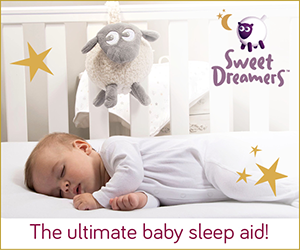Breast-Feeding Vs. Bottle-Feeding?

Breast milk is the ideal first food for your little one. But why is this, and does it mean that your baby misses out if breast-feeding isn’t for you?
Why breast-feed?
• Your milk adapts constantly as your baby needs change. From the nutrient-packed “pre-milk,” known as colostrum, which is produced at birth, to the higher-fat, calorie-dense milk that comes through several days later, its composition evolves to ensure your baby grows and thrives.
• Breast milk boosts immunity, too, providing antibodies and white blood cells that protect your baby in the first vulnerable weeks and months. This is something that can’t be replicated in formula.
• Breast-fed babies have fewer ear infections, respiratory problems, and eczema than bottle-fed babies.
• Breast-feeding is a smart system of supply-and-demand—as your baby sucks, nerve endings in your breasts are stimulated, triggering the release of the hormone prolactin, which signals your body to make more milk. You should always produce exactly the right amount of milk for your baby.
• Breast milk is thirst quenching, as well as filling. At the beginning of a feeding, your baby enjoys more watery “foremilk,” and as your breasts empty, richer, fattier “hindmilk” is released.
• Moms benefit, too. Breast-feeding triggers the release of the hormone oxytocin, which causes your uterus to contract after birth.
Combined with the calories used, many women report rapid weight loss. Longer term, breast-feeding may lower your risk of various cancers and osteoporosis in later life, too.
• Breast milk is easier to digest than formula, and babies are less likely to be constipated.
• It’s convenient; you can feed your baby anywhere, producing milk at the right temperature.
• Breast milk can help to stimulate your baby in the daytime and relax her at nighttime.
Why bottle-feed?
• If you decide to bottle-feed, you can be confident that formula, derived from cow’s milk, provides a high-quality alternative to breast milk. Designed to replicate breast milk as closely as possible, formula meets all your baby’s nutritional needs. Choose a formula with more “whey” protein since it is easier for your baby to digest.
• It can be reassuring to know exactly how much milk your baby is drinking.
• Bottle-fed babies have steadier, more predictable weight gain than breast-fed babies. There is a variety of bottle sizes, so you can match the bottle to your baby’s appetite, but make sure you don’t overfeed her.
• You can share the experience with your partner and take turns doing night feedings to get a little more sleep.
• There are no sore nipples, embarrassing leaks, or worries about whether what you eat and drink will affect your baby.
IN 2010, 87 percent of moms in Canada breast-fed their babies after birth. THE US, FRANCE, Italy, and Spain have the highest rates worldwide of bottle-fed babies.
Breast milk is the right food for your baby; nothing can replicate it exactly. However, breast-feeding doesn’t work for every new mom, which is when formula makes sense.
Did you know?
THE FIRST FORMULA was developed in 1867 and has evolved over the years, with many companies investing in research.
5 BEST BURPING TACTICS
1. Hold your baby upright, her head over your shoulder, and rub her back in a circular motion.
2. Sit her on your lap, supporting her in an upright position, and lean her forward slightly while rubbing her back.
3. Lie her face-down across your lap, supporting her securely under the arms with one hand while you rub her back.
4. Lie her down on her back and rotate her legs back and forth in a cycling motion.
5. Cradle her face-downward along your forearm, supporting her head with your hand, and rub her back while gently swinging her.
Excerpted from Pregnancy The Beginner’s Guide – Canadian Edition copyright 2014 Dorling Kindersley Ltd.




